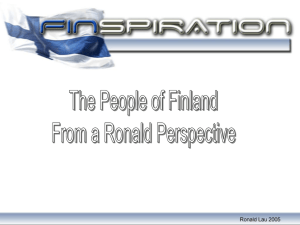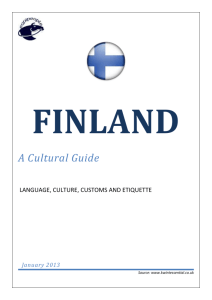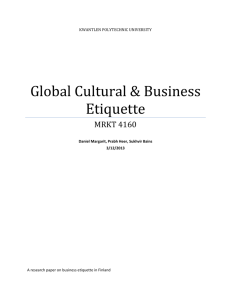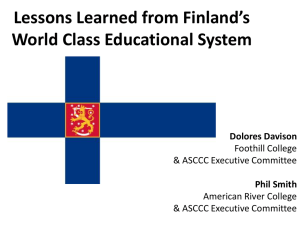EPC Exhibit 134D-9 - National Library of Australia
advertisement
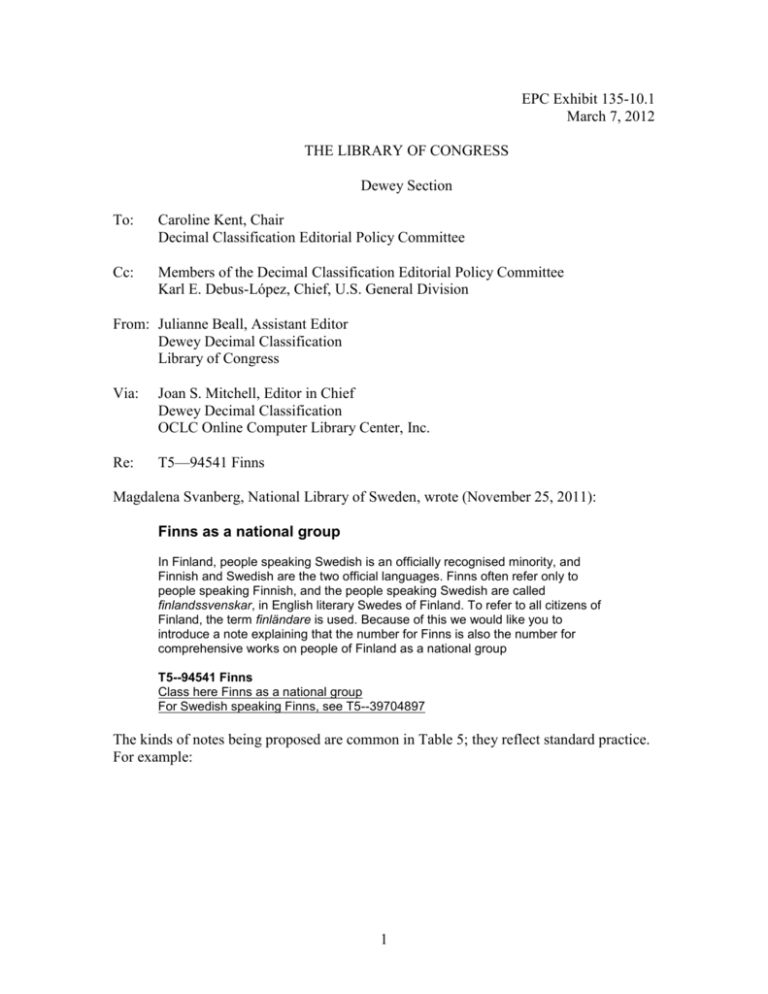
EPC Exhibit 135-10.1 March 7, 2012 THE LIBRARY OF CONGRESS Dewey Section To: Caroline Kent, Chair Decimal Classification Editorial Policy Committee Cc: Members of the Decimal Classification Editorial Policy Committee Karl E. Debus-López, Chief, U.S. General Division From: Julianne Beall, Assistant Editor Dewey Decimal Classification Library of Congress Via: Joan S. Mitchell, Editor in Chief Dewey Decimal Classification OCLC Online Computer Library Center, Inc. Re: T5—94541 Finns Magdalena Svanberg, National Library of Sweden, wrote (November 25, 2011): Finns as a national group In Finland, people speaking Swedish is an officially recognised minority, and Finnish and Swedish are the two official languages. Finns often refer only to people speaking Finnish, and the people speaking Swedish are called finlandssvenskar, in English literary Swedes of Finland. To refer to all citizens of Finland, the term finländare is used. Because of this we would like you to introduce a note explaining that the number for Finns is also the number for comprehensive works on people of Finland as a national group T5--94541 Finns Class here Finns as a national group For Swedish speaking Finns, see T5--39704897 The kinds of notes being proposed are common in Table 5; they reflect standard practice. For example: 1 T5—35 Swiss Class here Swiss Germans, comprehensive works on people of Switzerland as a national group For Swiss citizens of other ethnic groups, see the ethnic group, e.g., French-speaking Swiss T5—410494, Romansh-speaking Swiss T5—59960494, Italian-speaking Swiss T5—510494 The Manual entry at Table 5. Ethnic and National Groups, discussing preferred citation order in the Ethnic group and nationality section, uses Finns as an example: The generally preferred citation order is ethnic group over nationality, as nationality is normally given a low priority, and citizens and noncitizens of a country class in the same number. . . . . In general, use the same number for both the majority ethnic group of a nation and the total population viewed as a national group, e.g., T5—94541 for both ethnic Finns and all citizens of Finland viewed as a national group. Usually, priority between ethnic and national affiliation is an issue only for minority ethnic groups, e.g., use T5—39704897 (T5—397 Swedes + T2—4897 Finland) for Finnish citizens who are ethnic Swedes, a minority ethnic group, because their ethnic group takes priority over their nationality. Use T5—94541073 (T5—94541 Finns + T2—73 United States) for Finnish citizens who are ethnic Finns in the United States, but use T5—397073 (T5—397 Swedes + T2—73 United States) for Finnish citizens who are ethnic Swedes in the United States, which is the number for all persons of Swedish descent in the United States. Their Finnish national origin is not expressed because of the low priority given to nationality. The exception to this rule occurs when the class number to which Table 5 notation is added defines the present location of the group, as in 940–999, so that it is possible to express both the present and the past location of the group, e.g., use 973.0439704897 for ethnic Swedes from Finland in United States history. We recommend following the Swiss pattern for the wording of the new notes—except that when the caption is “Finns,” there is no need for an equivalent to “Class here Swiss Germans.” Incidentally, the note about Kven and speakers of Tornedalen Finnish was introduced with DDC 23. 2 T5—94541 Finns Class here comprehensive works on people of Finland as a national group Class Kven and people who speak, or whose ancestors spoke, Tornedalen Finnish in T5—9454 For citizens of Finland belonging to other ethnic groups, see the ethnic group, e.g., Swedish-speaking Finns T5—39704897 The standard Table 5 see-reference that we propose for T5—94541 gives enough context to make clear that “Swedish-speaking Finns” is not limited to emigrants outside Finland; consequently, the different LCSH usage should not be a problem. LCSH uses “Swedishspeaking Finns” as a see reference to “Finland-Swedes,” a heading that has the scope note: “Here are entered works on the Swedish-speaking linguistic minority who have emigrated from Finland. Works on Swedes living in Finland are entered under [Swedes—Finland.]” (See the LCSH authority records at http://id.loc.gov/authorities/subjects/sh2006007258 and http://id.loc.gov/authorities/subjects/sh2006008515.) We have not provided Relative Index entries for French-speaking Swiss, Romanshspeaking Swiss, or Italian-speaking Swiss; the pattern is not to index a standard ethnicgroup-plus-area built number for a minority group unless we are mapping an LCSH to the built number. We do not propose to provide a Relative Index entry to the built number for Swedish-speaking Finns. 3

